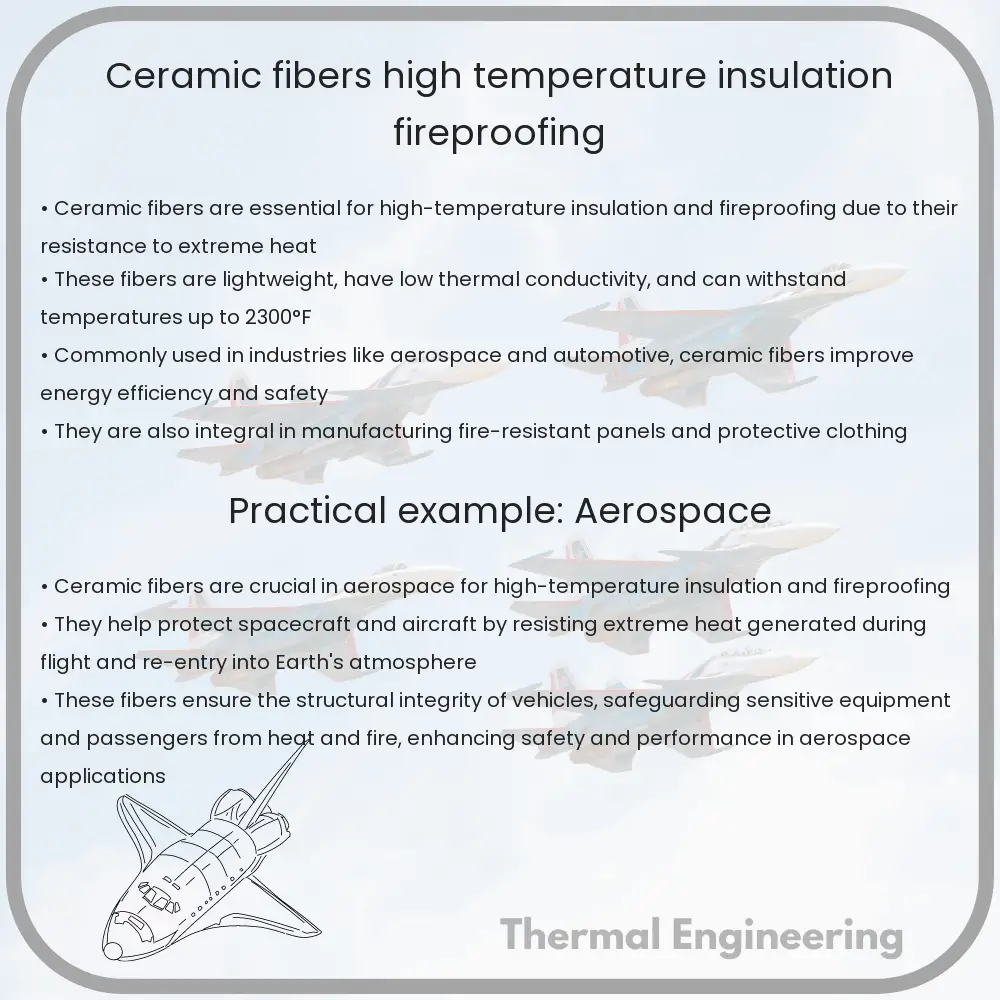Learn about ceramic fibers, their composition, properties, and applications in high-temperature insulation and fireproofing.

Understanding Ceramic Fibers: Applications in High-Temperature Insulation and Fireproofing
Ceramic fibers are a type of synthetic vitreous fiber (SVF), used primarily for their outstanding thermal insulation properties and resistance to high temperatures. These fibers are typically composed of alumina, silica, and sometimes other metal oxides. Their remarkable characteristics make them invaluable in a variety of industrial applications, particularly in high-temperature environments.
Composition and Production
The primary components of most ceramic fibers are alumina (Al2O3) and silica (SiO2). These materials are melted together at very high temperatures, usually over 2000°C. The molten material is then spun or blown to form fibers. This process results in fibers that can be both lightweight and low in thermal conductivity, allowing them to function effectively as insulation materials.
Properties of Ceramic Fibers
The key properties of ceramic fibers that make them suitable for high temperature insulation and fireproofing include:
- Low Thermal Conductivity: Ceramic fibers have low thermal conductivity, which means they are effective at minimizing the transfer of heat. This property is particularly valuable in industries where heat conservation is crucial.
- High Temperature Stability: These fibers can withstand temperatures ranging from about 650°C up to 1400°C (or higher, depending on the composition), making them suitable for use in furnaces, kilns, and reactors.
- Low Heat Storage: Ceramic fibers can quickly heat up and cool down due to their low heat storage capacity. This feature helps in improving the energy efficiency of systems in which they are used.
- Thermal Shock Resistance: They are resistant to thermal shock, meaning they can withstand sudden changes in temperature without suffering damage.
- Chemical Stability: Generally, ceramic fibers display excellent resistance to chemical attack, especially from most alkalis and acids at high temperatures.
Applications of Ceramic Fibers
Ceramic fibers are utilized in a variety of applications owing to their thermal insulation properties and thermal stability. Some of these applications include:
- Refractory Linings: Ceramic fibers are used in the linings of furnaces, kilns, and reactors to provide insulation and improve energy efficiency.
- Fire Protection: Given their resistance to high temperatures, ceramic fibers are employed in fireproofing for buildings and fire barriers in airplanes and ships.
- Aerospace Insulation: The aerospace industry uses ceramic fibers for the insulation of spacecraft due to their light weight and ability to withstand the extreme temperatures of space travel.
- Automotive Exhaust Systems: Ceramic fibers are also used in the insulation of automotive exhaust systems to reduce heat transfer, thereby protecting components and improving vehicle performance.
Environmental and Health Considerations
While the benefits of using ceramic fibers in various applications are significant, health considerations must be taken into account. Inhalation of ceramic fibers can pose health risks such as respiratory problems. Consequently, appropriate protective measures and handling procedures are recommended during the manufacturing and application processes.
In conclusion, ceramic fibers play a crucial role in many industries where high temperature insulation and fireproofing are required. Their unique properties, including low thermal conductivity and high temperature stability, make them ideal for a broad range of applications. Nonetheless, safety precautions are essential to mitigate any health risks associated with their use.